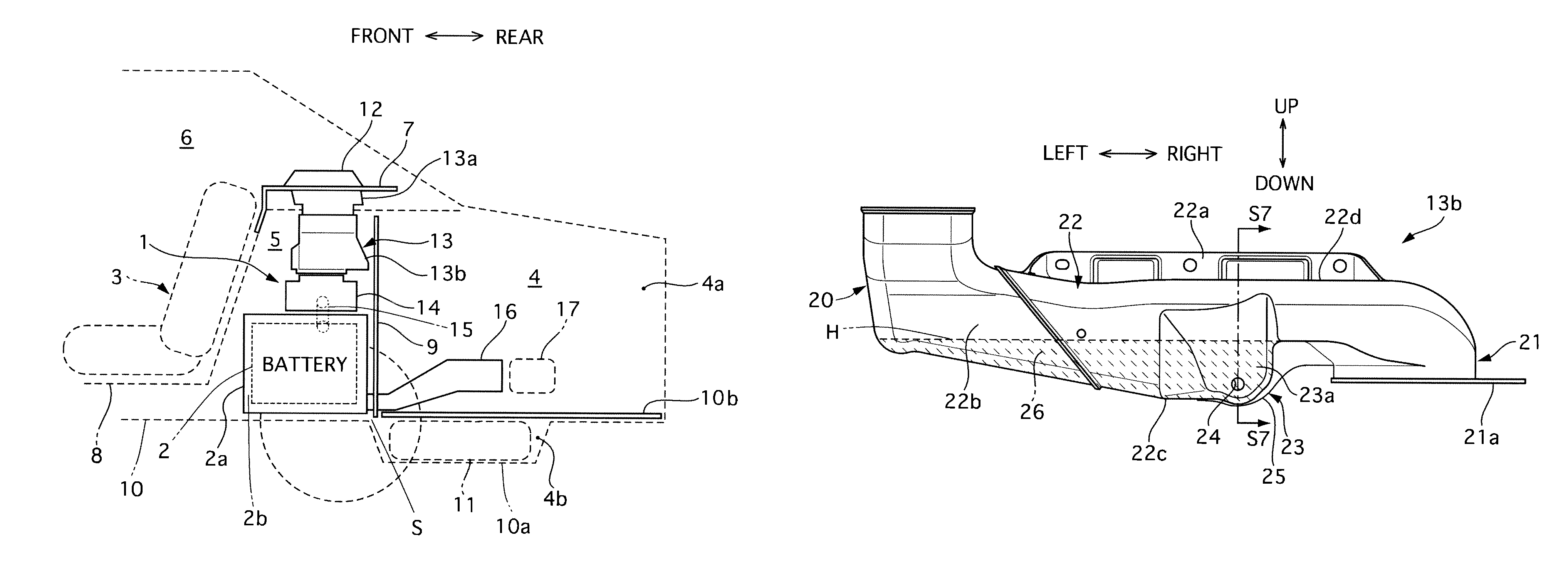Structure for cooling heating element
a technology for heating elements and structures, applied in the control arrangement of battery/fuel cell, electrochemical generators, lighting and heating apparatus, etc., can solve the problems of liquid overflow and entering the battery, battery damage, battery damage,
- Summary
- Abstract
- Description
- Claims
- Application Information
AI Technical Summary
Benefits of technology
Problems solved by technology
Method used
Image
Examples
Embodiment Construction
[0032]Throughout the following detailed description, similar reference characters and numbers refer to similar elements in all figures of the drawings, and their descriptions are omitted for eliminating duplication.
[0033]In a first preferred embodiment according to the present invention, a structure for cooling a heating element is applied to an electric vehicle, and the heating element is a battery that is capable of supplying an electric motor and other electric devices with electric power.
[0034]Referring to FIG. 1 and FIG. 2 of the drawings, there is shown the first embodiment of the structure for cooling the heat element in a state where it is mounted on a rear portion of the electric vehicle.
[0035]The structure 1 for cooling the battery 2 is installed in a battery storage space 5 which is formed between a passenger compartment 6 and a rear luggage compartment 4.
[0036]An interior panel 8 and an interior trim 7 define the battery storage space 5 from the passenger compartment 6. ...
PUM
| Property | Measurement | Unit |
|---|---|---|
| structure | aaaaa | aaaaa |
| volume | aaaaa | aaaaa |
| electric power | aaaaa | aaaaa |
Abstract
Description
Claims
Application Information
 Login to View More
Login to View More - R&D
- Intellectual Property
- Life Sciences
- Materials
- Tech Scout
- Unparalleled Data Quality
- Higher Quality Content
- 60% Fewer Hallucinations
Browse by: Latest US Patents, China's latest patents, Technical Efficacy Thesaurus, Application Domain, Technology Topic, Popular Technical Reports.
© 2025 PatSnap. All rights reserved.Legal|Privacy policy|Modern Slavery Act Transparency Statement|Sitemap|About US| Contact US: help@patsnap.com



